1- Historical background :
Early 19th century, the project to equip the village with fountains is due to several petitions of inhabitants of the (street) Grande-Rue and of the (street) rue des Maréchaux for to have at their disposal drinking water of better quality than that of existing wells.
Report of the project to build several fountains dated 05/05/1849 :
- « For several years, various municipal administrations who took over have been concerned by the water supply project. »
- « Today, the city council, in the persuaion that it will get several wooden cuts witch must produce about 100,000 francs [1], just uploaded the undersigned architect to complement previously developed work (…) [2] »
We will talk here about the fountain called « de la rue des Maréchaux », who is today place de la Mairie. The specifications are the same for the second fountain installed « place de la Halle ».
2- Estimate :
First estimate is established by the architect NARJOUX to the attention of the petitioners ; it’s dated 10 February 1854.
Besides the dimensions prescribed and the technical contraints he imposes ( diameter of water jets, discharge valve, overload assessment..), he is expressly mentioning :
- « The monument in casting to be placed in the centre of this basin will be cast in the foundries of Val d’Osne (Haute-Marne) »
Second estimate ( or specifications) is established on March 10, 1857. It’s said :
« The first fountain and the most important [3], will be placed originally (street) rue des Maréchaux, on the side on the clos [4] of M. de LACUISINE ; it will have 3 continuous jets (…) »
- « the outline of the basin will be in stone, but the upper part of the main body will be in ornamental cast, depending on the drawing. [5] »
- « The socles supporting these casting will be in stone. [6]»
- « The stone (…) for the socle of the fountain and its basin, will be hewed with a bush hammer between 4 citselures, and with the greatest care (…) »
- « The fountain’s body will be in cast, the model chosen by the architect and the municipal administration (...) »
3- Construction
The work will spread over several years.
First it’s about bringing water from « bassin de la source » (quarter St Nicolas), all along the street ( Grande Rue) by a drain in cast, up to the location of the fountains.
It is the NOUVEAU-CHAUSSARD compagny who is carrying the tendering.
In the end the first verbal proceedings for the receipt of the works, dated 2 july 1862, show the importance of the site : 5 years of work !
Here are some details of the expenses made by the contractor :
- « Put fountains down : transport from the train station to the locksmith, to the fountain street (rue des Maréchaux), at about 500 m…. 10,00 F »
- « Establishment of the fountain, including scaffolding and help of several workers...20,00 F »
- « Manpower of the tinsmith DUPUIS for to put lead pipes with the interior basin of this same fountain… 30,00 F »
It will therefore have taken a total, between the first project (1846), and the finalization of the work (1862), not less than 16 years for the inhabitants of streets ( rue des Maréchaux and Grande Rue ) to have drinking water !
4- The fountain
She has been chosen banally, on a catalog.
The cast part, and especially the little angel (italian style « putti » from Renaissance), chosen at the end by the City Hall, those originally planned by the architect are very different ; probably because of the cost. (see drawing of the architect [7] for the first)
The one we know, with the shell on his head, and heads are opening on the sides of the fountain’s body, come from the foudry Val d’Orne.
Several publics fountains with a little angel exactly similar exist in France : Marmagne (Saône-et-Loire) ; Villeneuve-le-Roi (Val-de-Marne) ; (street) rue Charlemagne in Paris….
The initial model was drawn and realised for the foundry by the sculptor Hubert LAVIGNE ( born in 1818 in Cons-la-Granville, Meurthe-et-Moselle died in 1881 in Paris).
We’ll note that it’s the last one publishes, in 1881, on behalf of the society of the History of French Art, tickets for funeral or death of French artists, among which, François’s PROTHEAU, a statue sculptor from Fontaines ( 1823-1865)
Michel BONNOT and François SIKNER
(Decemeber 2015)
|
©-Groupe de Recherches et d’Etudes Fontenoises-2015 |
[1] It’s a center of interest still topical !
[2] Architect NARJOUX, from Chalon sur Saône as a master of work. Initial project dated 1846.
[3] The second is of course the one « Turtules basin », in the (futur ??) square Madeleine GOUFFIER, called « place de la Halle ».
[4] Bought it later by the baron Sainte Suzanne.
[5] See illustration at the end,
[6] Taken from ston’s quarries of Montaigu.
[7] This is the model adoped by Givry, around the same time
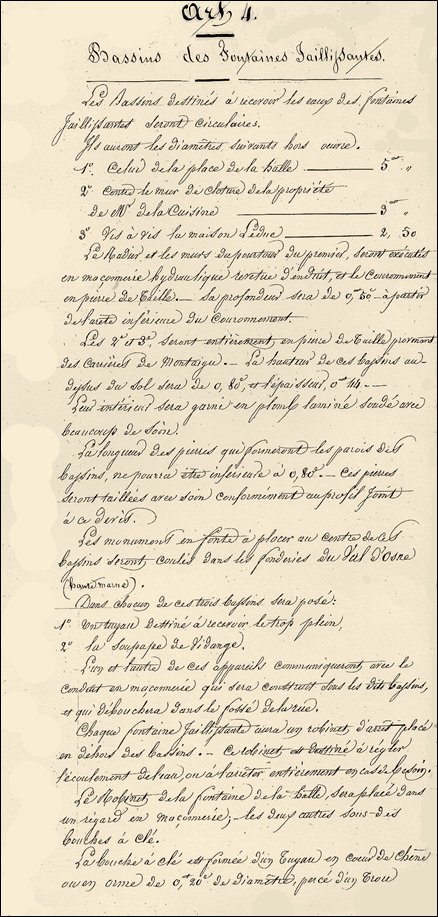
Extracted from the estimate 02/10/1854.
(A.C.Fontaines- 3 N 1)

Design of the statue in cast planned by the architect NARJOUX
March 10, 1857.(A.C. Fontaines-3 N 5)

At the left, the statue adapted by the municipality for the fountain street (rue des Maréchaux)
Source : Catalog of the S.A. des fonderies of Val d’Osne.
Ca : 1860.
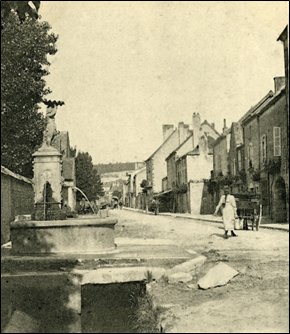
From the fountain around 1905. To re-cover aqueduct and the pipeline. A wall closes the baron’s Sainte Suzanne property.
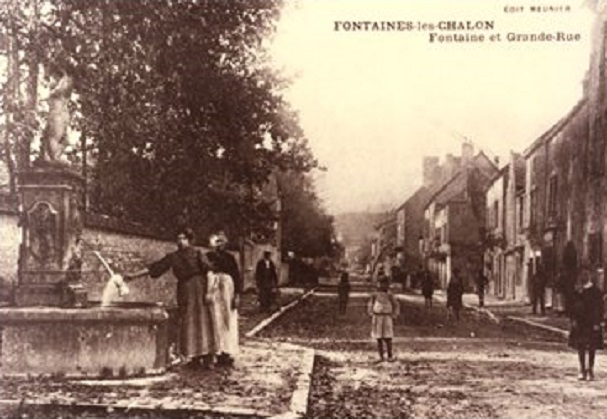
The fountain around 1906 – 1910. It’s protected by a sidewalk. Note the importance of water flow !
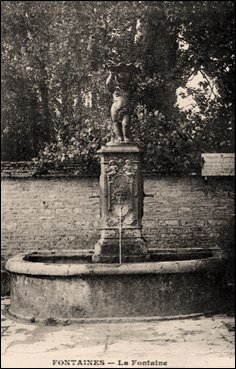
The fountain around 1910. Behind, the baron’s Sainte Suzanne property park.
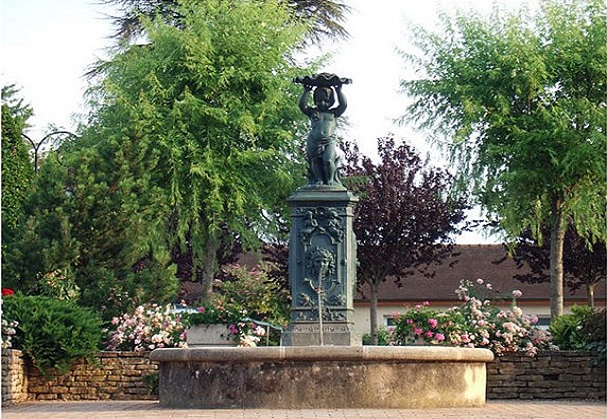
The fountain in the late ‘90s. Photo : JOSSERAND
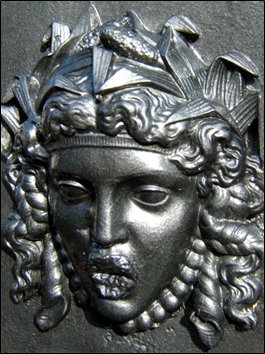
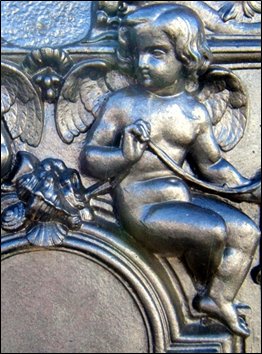
The fountain today with details. Photo : M.B.
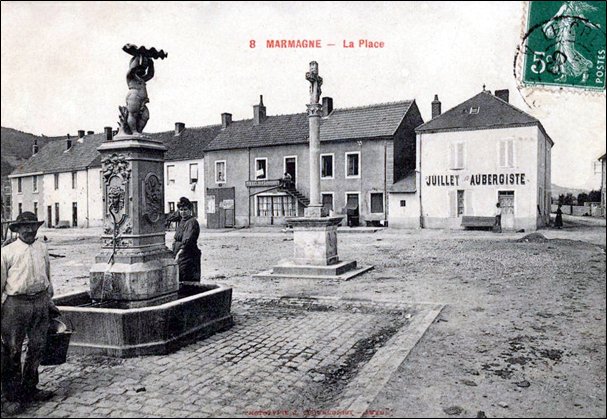
Fountain of the village of Marmagne (71) : Located in a rural village like Fontaines, early 20th century , the fountain is here just protected by a paving. Ancient postal card around 1905 – 1910.
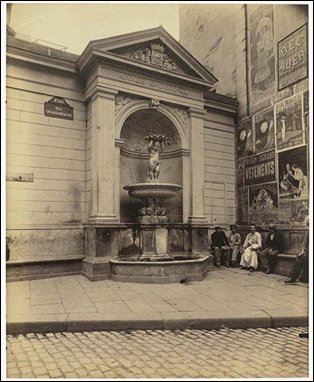
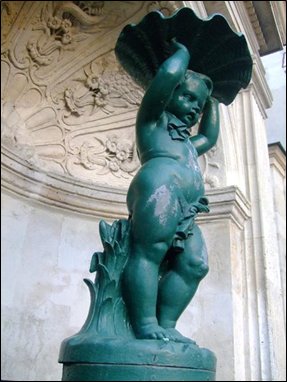
Fountain of the street « rue Charlemagne. » Paris(4). Big shot on the vasque
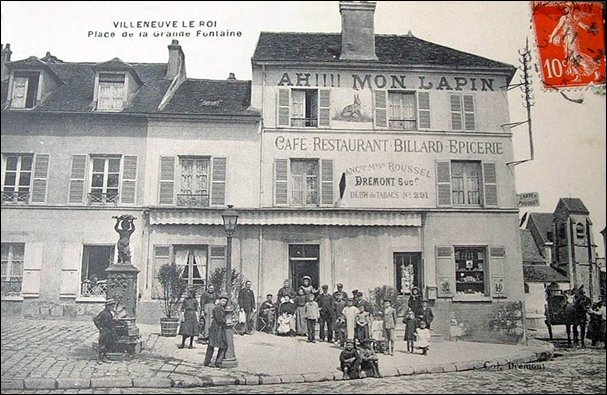
Fontain of Villeneuve-le-Roi(94). Ancient post card (ca 1910)

